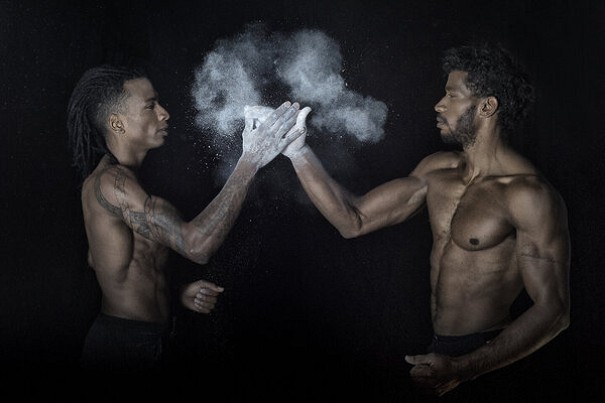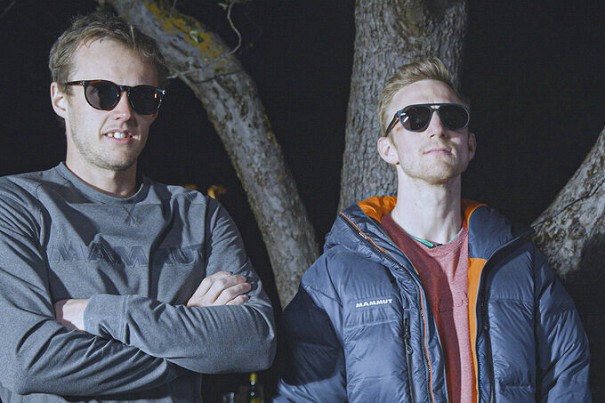
What does it take to become an Olympic climber?
With the long-overdue Tokyo 2020 Olympic Games almost upon us, it won't be long before Sport Climbing is let loose on the world's biggest sporting stage.
Just like anyone long past their peak and in denial about it, I recently found myself questioning what it takes to become an Olympic climber. Apart from the obvious answer of fending off ferocious competition at the qualifying events, I became increasingly curious about the Olympians, their backgrounds, and the qualities that set them apart from the rest of us.
Of course, there will always be differences between athletes. Every climber has their own style and training regime, but beneath that, there are a few common traits that tie these Olympians together.
Just in case you've set your sights on Paris 2024, I have done some digging into what it takes to become a Sport Climbing Olympian and attempted to answer some of the common questions you might have. What is the average height? How old were they when they first started climbing? What grades are these athletes pushing?
Now, I'm not saying you that need to meet any of the criteria below to be a good climber; the sport can be enjoyed by people of all ages, abilities and experience levels, which is part of its growing appeal. But perhaps there's something to be learned here, or simply something to savour if you have a fondness for climbing stats and trivia.
The findings below are based on the 40 climbers heading to Tokyo.
The Inherent Traits
If you have tuned into any climbing competitions before, you have probably already noticed the striking similarities that the professionals share. Climbers in the real world come in all shapes and sizes, but the pros seem to be cut from similar, superhuman cloth.
Age is perhaps the most simple measurement we use to compare ourselves to one another. Personally, I feel a slight sense of relief when I see a professional athlete on TV who is older than I am. It's almost as if I still have a chance to go pro, as I sit on the sofa watching with my family bag of crisps.
For the 40 Olympians, the age range is surprisingly diverse, with the youngest competitor being Colin Duffy (17) and France's Bassa Mawem (36) being the oldest. The average age comes in at just over 23 years old for the women whereas, for men, it's slightly older at 26. That might not sound like much, but there are double the number of female climbers under 21 compared to their male counterparts.
The reason for this age difference? If I were to hazard a guess, it could be explained by drawing comparisons from Olympic Gymnastics. The discipline shares a similar physically demanding nature to Sport Climbing, as well as a comparable gender/age skew.
One explanation, as former gymnastic athlete Tabitha Yim has proposed, could be that female gymnasts tend to take up the sport at a younger age than men, and so reach their peak sooner. We can see this reflected in the data, as the average female Olympic climber started at the age of 7 1/2, nearly 2 years before their male counterparts, who typically begin climbing at 9-years-old. Equally, though, there could be cultural reasons at play, such as the fact that female professional athletes earn less from prize money and sponsorships than their male counterparts across most sports, or feel societal pressure to retire to build an alternative career or start a family.
Of all the data, however, perhaps the most apparent similarity is the competitor's height, especially for women. Basketball pundits throw around the phrase "you can't teach height", and this seems to ring true for Olympic climbers too.
The average female competitor measures in at 163cm, and amazingly, 75% of the women heading to Tokyo stand within 3cm of this. That's not to say that height is the be-all and end-all, after all, Laura Rogora is 20cm smaller than her tallest rival.
The height trend carries over to the men too, albeit not to the same extent. The men's average is 176cm, with 40% within a 5cm height difference.
Crushing Credentials
For better or for worse, when the combined format was first announced in early 2018, almost every athlete had to adjust their training and adapt to unfamiliar climbing disciplines.
The majority of the climbers that qualified for the Olympics were specialists at a single discipline, with only a handful of athletes excelling equally across all three specialisms. Looking at the UKC athlete profiles, 43% of Olympic climbers are strongest at bouldering, 37% on lead and the remaining 20% perform best on the speed wall.
It's clear that boulder and lead specialists have a more transferable skill set, which explains why these athletes make up 80% of the field. This also accounts for why many of the top speed climbers were unable to qualify for the upcoming games. Just as Joe Kinder stated, "There is NO question that the speed climbers will be the ones with the hardest time".
It probably won't surprise you that one in three Olympians are second-generation climbers. Although over half of the athletes were introduced to the sport through their families, the rest were either introduced through a trip to their local wall (27%), their school (13%) or by friends (7%).
If you weren't fortunate enough for your parents to pick you out of the pram and put you into a harness, don't be discouraged. Over 15% of the competitors started climbing after the age of twelve. Russia's Alexey Rubtsov was the latest to the party, having only started climbing at age 17.
Three out of four Olympic climbers are also frequent outdoor crushers that have laid down some serious ascents. If you are leading anything between 8c - 9a, congratulations, you are on track to secure your spot for 2024. As for the Olympians that boulder outdoors, the hardest ascents seem to hover around V12 for the women, and V14 for the men.
Of course, there are athletes who have carved their legends from stone with even harder ascents than this (not naming any names, Adam Ondra, Alex Megos, Julia Chanourdie, Laura Rogora and Brooke Raboutou). In reality, however, the journey of an Olympic climber seems to be confined to hot gyms and dingy weight rooms, especially as the competition season intensifies.
Slovenia's Mia Krampl said it herself: "There are not a lot of chances to go to the rocks due to so many competitions and training." Even Ondra, King of the Crag, mentioned in a recent Instagram post that he hadn't climbed outdoors in several months.
Winning Mindset
Perhaps the most important quality any competitor can possess is a winner's mentality. How athletes deal with pressure or adapt to unexpected situations is crucial to success, regardless of the sport.
Fortunately, these climbers have had a lot of practice dealing with the pressure of competition climbing, after all, they didn't just stumble into an Olympic qualifying event. The average Olympic climber has already made 85 appearances at IFSC recognised events and have spent, on average, 40% of their life as a competitive climber.
Sure, these athletes all have their own climbing styles and preferred disciplines, but one thing they have in common is exceptionally good route-reading abilities.
One way we might be able to quantify this problem-solving ability is with the help of the Rubik's Cube. It certainly doesn't take a genius to solve the cube, but being able to complete it does show some level of spatial reasoning, pattern recognition and visualisation - all of which are essential for competition climbing.
Over 30% of the Olympic climbers can complete the Rubik's Cube, 6 times higher than the estimated global average. Unsurprisingly, Adam Ondra and Janja Garnbret had better things to do than talk about kids toys, but of the 16 Olympic climbers I spoke to, 75% said they could complete the Rubik's Cube. Does this say something about an Olympic climbers' ability to memorise movement patterns and solve three-dimensional problems?
I asked Udo Neumann, climbing coach and movement expert, if he thought there were any transferable skills of being able to complete the Rubik's Cube. Here's what he had to say, "I don't know how big a transfer there is, but I've seen, for example, Jorg Verhoeven play with it for hours. I wouldn't be too surprised if his brain is active in similar ways as when reading routes."
Chess is also played by and between a few Olympians, especially Jakob Schubert and his housemate Michael Piccolruaz, and Team USA athletes Nathaniel Coleman and Kyra Condie. The brain is like a muscle, etc. ...
Have you got what it takes?
I'll let you be the judge on how much these inherent and conditioned qualities impact one's ability to climb at an Olympic level.
There are still an abundance of obvious similarities that have not been mentioned here. Most, if not all, Olympic climbers have a hugely supportive network of family, friends and coaches that have supported them physically and mentally throughout their competitive careers. Every athlete seems to constantly manage brutal training regimes, but perhaps most importantly of all, they are all completely dedicated in pursuit of their goal to compete at the highest level.
At the end of the day, we can't all be Olympic climbers. What we can do is grab that family bag of crisps, sit back, and enjoy the current best of the best compete for the first Sport Climbing medals in history...



